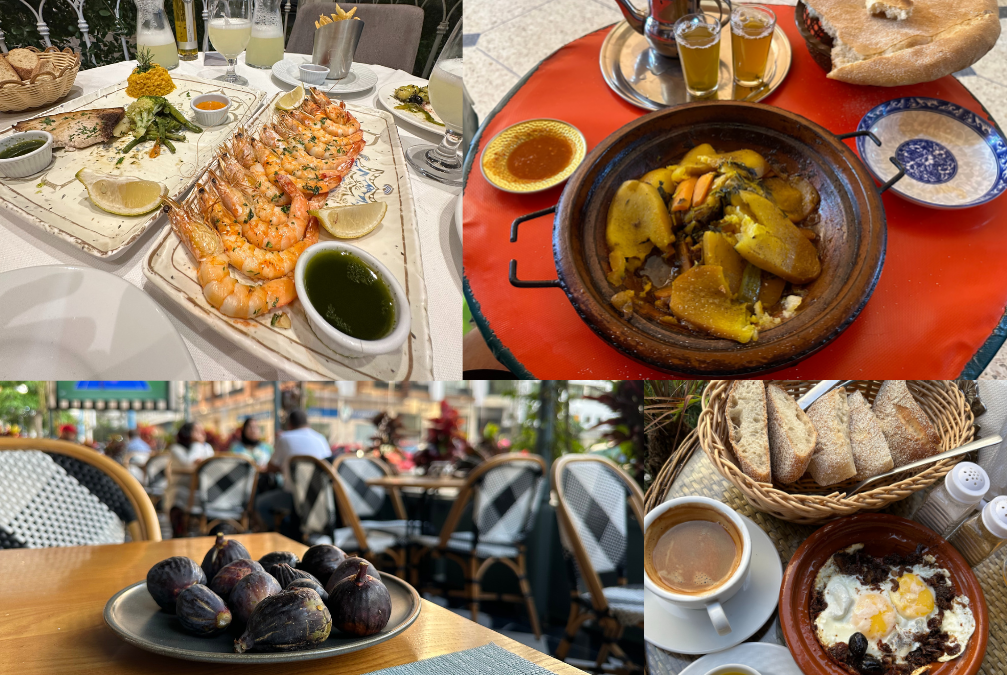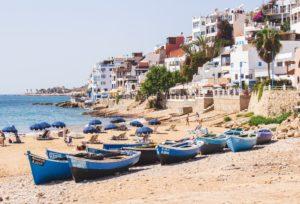Morocco, a land renowned for its rich culture and culinary diversity, offers an array of dining experiences that cater to every palate. From bustling street food stalls to luxurious fine-dining establishments, the country’s restaurant scene is as varied as its landscapes. This guide aims to navigate you through the vibrant world of Moroccan eateries, providing insights into the types of restaurants you can expect to find. Whether you’re a first-time visitor or a seasoned traveler, understanding the dining landscape is crucial for an authentic Moroccan gastronomic adventure.
In this comprehensive guide, we delve into the essentials of Moroccan cuisine and dining etiquette, ensuring that tourists are well-prepared for their culinary journey. You’ll discover the best Moroccan foods to try, from tangy tagines to sweet pastilla, and learn how to navigate menus and dining customs. We also offer practical tips for tourists, including advice on tipping, restaurant timings, and cultural nuances. Our goal is to equip you with all the knowledge you need to fully enjoy the Moroccan dining experience, making your visit truly unforgettable.
How to Find a Good Restaurant in Morocco?
Finding a good restaurant in Morocco largely depends on your personal taste preferences, but there are several effective strategies to help you discover great dining spots. Firstly, asking the reception staff at your hotel for recommendations can be extremely helpful. They typically have a good understanding of the local dining scene and can suggest restaurants that cater to various culinary tastes, from traditional Moroccan fare to international cuisine.
Additionally, seeking advice from locals can be invaluable. Moroccans are known for their hospitality and are usually eager to share their favorite dining spots. A restaurant that’s popular with locals, especially one that’s crowded, is often a sign of good food and authentic atmosphere.
Additionally, digital tools like Google Maps and TripAdvisor are quite helpful, especially in tourist-heavy areas. These platforms provide user reviews, ratings, and sometimes photos, giving you a better idea of what to expect. They are particularly useful for finding restaurants with specific types of cuisine or atmospheres. However, be aware that in remote areas or smaller towns, these tools might not be as accurate or have as many reviews.
Combining advice from your hotel, local insights, and online resources will give you a comprehensive view of the best dining options available, suited to your personal preferences.
Types of Restaurants in Morocco
In Morocco, the restaurant scene is as diverse as its rich culture, offering a variety of dining experiences that cater to different tastes and preferences. Broadly, the main types of restaurants you’ll encounter include:
1. Traditional Moroccan Restaurants: Often considered the best for an authentic experience, these establishments serve local cuisine in a simple yet genuine setting. The dishes here are not only delicious but also reasonably priced, allowing you to savor the real flavors of Morocco and soak in the traditional atmosphere.
2. Modern Moroccan Restaurants: These are a fusion of contemporary style with traditional Moroccan cuisine, adapting local dishes to suit the tastes of international clientele. They offer a unique blend of authenticity and modernity, making them a great choice for those looking for familiar yet distinct flavors.
3. Western-Style Fast Food and Low-Price Restaurants: Offering familiar Western options like burgers, pizzas, and various European cuisines, these restaurants cater to those seeking a taste of home. However, they often don’t match up to their European counterparts in terms of taste and quality, and might not be the best choice if you’re looking to explore Moroccan cuisine.
4. Luxury Restaurants: High-end establishments like Le Beret and Rick’s Cafe in Casablanca provide a lavish dining experience. They serve a wide range of cuisines, from French and Japanese to Moroccan, and are known for their impressive settings and quality dishes.
5. Moroccan Street Food: This is for those wanting to experience local food in its most authentic form. Street food in Morocco is loved by locals for its freshness and flavor. While it’s served in a simple manner, which might initially seem daunting to tourists, many find it delicious and a real part of the Moroccan experience.
Each type of restaurant in Morocco offers a different perspective on its culinary landscape, from the traditional flavors of local cuisine to the modern twists and international offerings. Depending on your personal taste and adventurousness, there’s something for everyone in Morocco’s diverse dining scene.
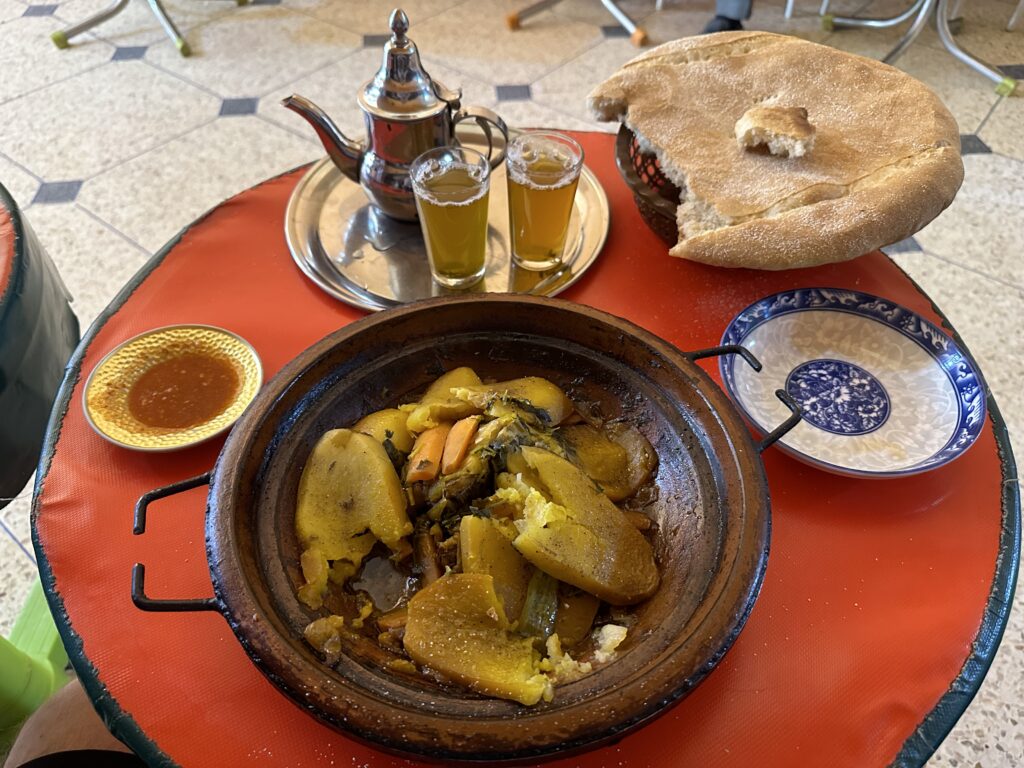
Here, you can see a picture of a tagine in a restaurant located in a small town near Beni Mellal. I must say, when Moroccan food looks like this, there’s a 95% chance it’s going to be delicious, and the prices are typically quite low. While some tourists might hesitate due to the simpler standards of such establishments, I personally find these restaurants to be the best. The food usually tastes amazing, and you can immerse yourself in an authentic Moroccan atmosphere, often more enjoyably than in luxury restaurants.
What to Know Before Visiting Moroccan Restaurants
Before you visit Moroccan restaurants, it’s essential to keep a few things in mind for a seamless and enjoyable dining experience:
Cash is King: Always carry cash with you. While some restaurants may accept credit cards, cash payment is the norm, especially in smaller or traditional establishments.
Communication: If you encounter a language barrier, using pictures to communicate your order can be quite effective. Although many restaurants, including simpler ones, usually have staff who can communicate in English, having a picture of the dish you want can be a handy backup.
Tipping: Offering a small tip to your waiter is a nice gesture and is appreciated, though it’s not a strict requirement. It’s a way of showing your gratitude for good service.
Embrace the Diversity: Moroccan restaurants offer a diverse dining experience. In some, you may feel as if you’ve stepped back in time, immersing yourself in a traditional and authentic atmosphere. In others, you might find the sophistication and style reminiscent of European dining, with similar quality and ambiance.
Check Opening Hours: Be aware that some restaurants, especially traditional ones, may have varying operating hours, particularly during the holy month of Ramadan. To avoid disappointment, it’s wise to check in advance. Additionally, be mindful that many opening hours listed online (e.g., on Google) are not always strictly adhered to. It’s best to ask the restaurant directly about their opening and closing times.
Respect Local Customs: It’s important to observe and respect local dining etiquette. For example, washing your hands before a meal and using bread as a utensil for scooping food are customary practices. When foreigners follow these customs, it often impresses Moroccans and can lead to friendly conversations.
Try the Local Specialties: Don’t miss out on traditional Moroccan dishes like tagine, couscous, and pastilla. These are staples and a must-try to really appreciate Moroccan cuisine.
Be Open to New Flavors: Moroccan food is known for its unique blend of spices and flavors. Even if you’re unsure about an ingredient or dish, give it a try – you might discover a new favorite!
Remember, dining in Morocco is not just about the food; it’s an experience. So, relax, enjoy the culinary journey, and soak in the rich culture and flavors that Moroccan cuisine has to offer.
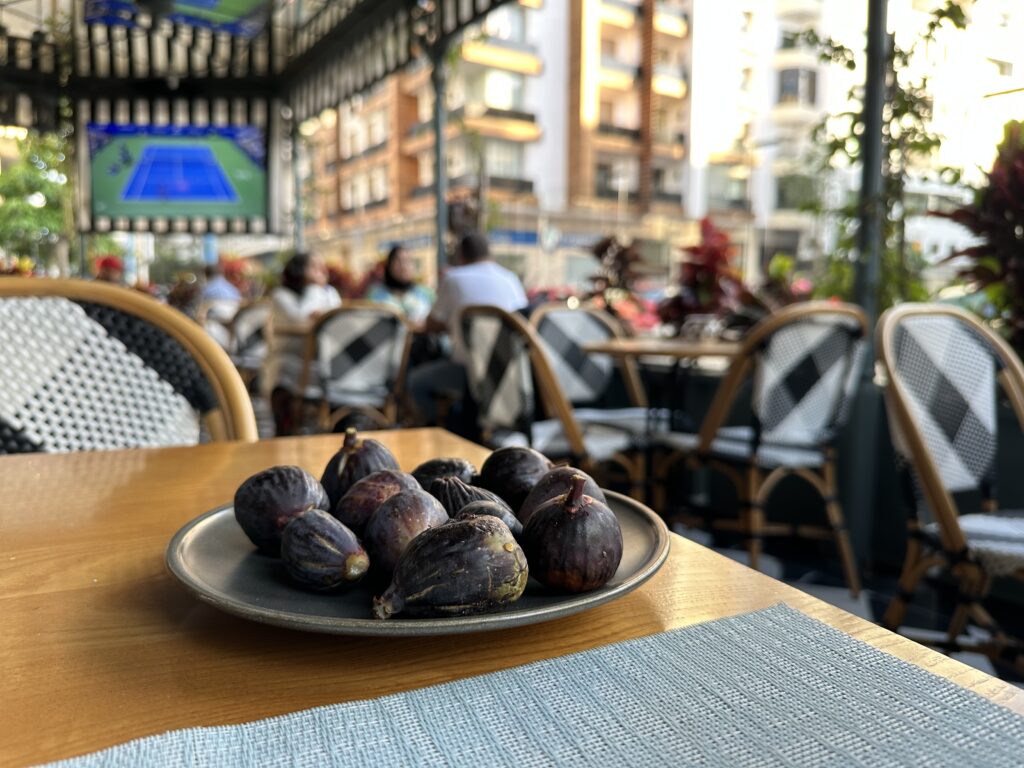
This is Restaurant Ferrandi in Casablanca. While seated here, you may feel as though you’re in a restaurant in a European city. They offer very good European cuisine and present their menus on digital tablets.
Going to Restaurants in Morocco with Children
When visiting restaurants in Morocco with children, there are several key points to keep in mind for a smooth and enjoyable experience:
Family-Friendly Atmosphere: Moroccan culture is generally very welcoming to families and children. Most restaurants are family-friendly, but it’s always a good idea to check if the establishment is suitable for children, especially if you plan to dine at more upscale or formal restaurants.
Menu Options: Traditional Moroccan cuisine is diverse and flavorsome, with options that can appeal to children. Dishes like couscous, kebabs, and mild tagines are usually kid-friendly. However, be aware that some Moroccan foods can be spicy, so it’s advisable to ask for less spice or mild versions of dishes when ordering for kids.
High Chairs and Facilities: While many restaurants in tourist areas and big cities are likely to have high chairs and other child-friendly facilities, this might not be the case in smaller, traditional establishments. It’s a good idea to check beforehand or be prepared to manage without these amenities.
Dining Times: Moroccan dining times might be later than what you’re used to, especially for dinner. Many restaurants don’t get busy until after 8 PM. If your children are accustomed to eating earlier, plan accordingly, perhaps opting for an earlier meal at less crowded times.
Portion Sizes: Moroccan meals are often generous in portion size. You might find that sharing dishes is a good approach when ordering for children.
Street Food: Street food is a big part of Moroccan food culture. It can be an exciting experience for children, but it’s important to choose vendors that look clean and are popular, as this often indicates fresh and good quality food.
Patience and Flexibility: Dining out in Morocco can sometimes be a leisurely affair, with meals taking longer than you might expect. A little patience will go a long way, and bringing along some quiet activities can help keep children engaged while waiting for food.
Remember, dining in Morocco is an opportunity to immerse in the local culture and cuisine. With a little preparation and an open mind, eating out with children in Morocco can be a delightful and memorable experience for the whole family.
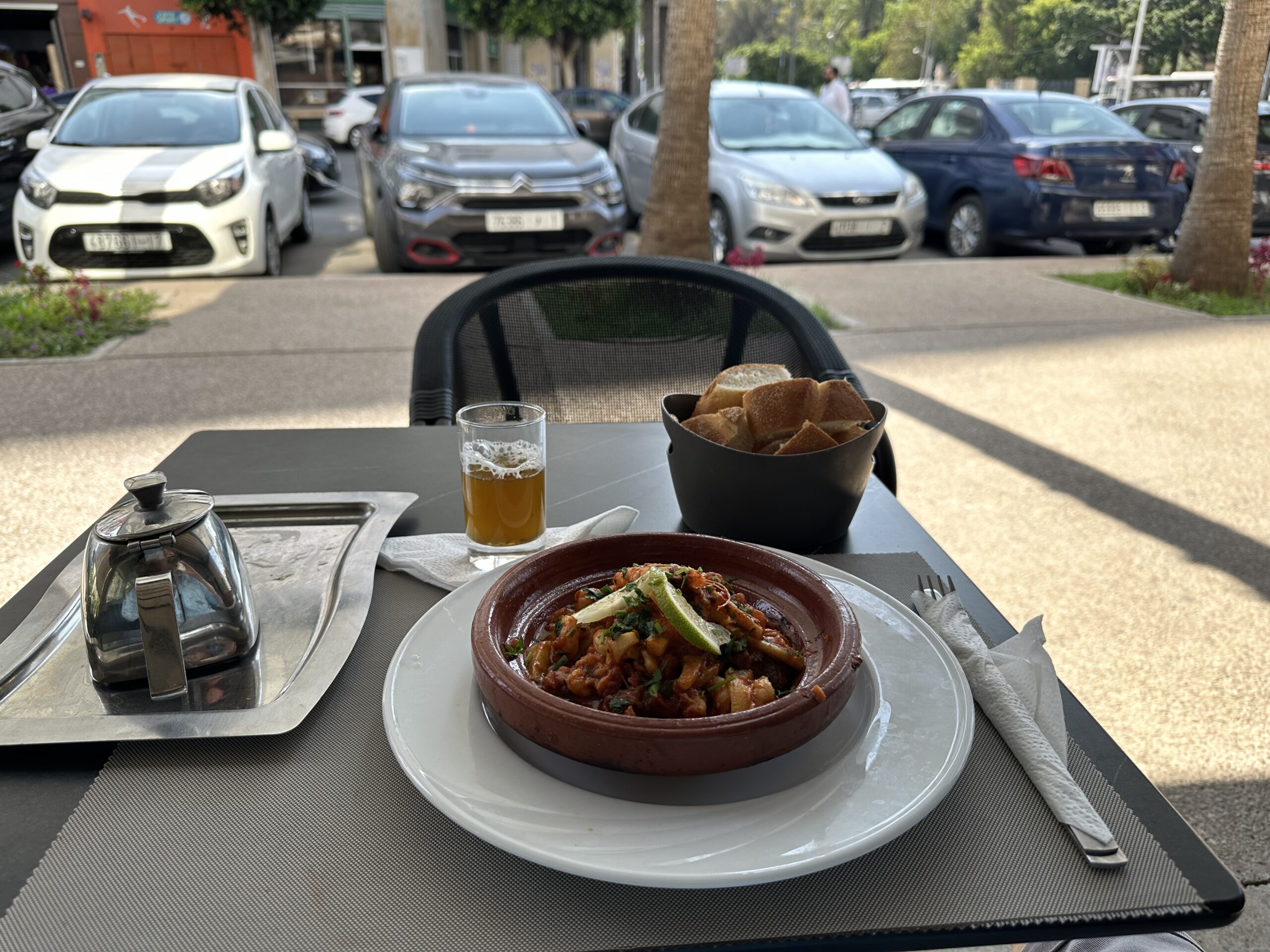
Delicious shrimp tagine and Moroccan mint tea served at Malak Hotel’s restaurant in Rabat.
Top 10 Best Foods to Try in Morocco
1. Tagine Kefta: A savory dish where seasoned meatballs are simmered in a rich tomato sauce, often served with bread.
2. Tagine with Shrimps: A delightful seafood variant of the traditional tagine, often infused with aromatic spices.
3. Grilled Kefta: Minced meat seasoned with herbs and spices, then grilled to create a smoky and flavorful experience.
4. Moroccan Seafood: Known for its freshness and affordability, it’s a must-try, ranging from grilled fish and fresh shrimps with lemon juice to seafood tagines.
5. Loubia: A hearty dish of beans in a tomato sauce, offering comforting flavors, though it’s not commonly found in all restaurants.
6. Couscous: A traditional Moroccan dish usually eaten on Fridays, featuring steamed couscous grains with vegetables, and occasionally chicken or beef. According to Moroccan tradition, eating couscous on Friday brings blessings from God.
7. Harira: A rich and hearty soup made with tomatoes, lentils, chickpeas, and meat, often seasoned with a blend of fragrant spices.
8. Moroccan Breakfasts: Ranging from French-inspired pastries to traditional options like khlea (dried meat with egg).
9. Moroccan Mint Tea: A staple beverage in Morocco, this sweetened tea with fresh mint leaves is both refreshing and culturally significant.
10. Fresh Olives and Village Butter: Moroccan olives are known for their robust flavor, and the local natural village butter is exceptionally rich and tasty.
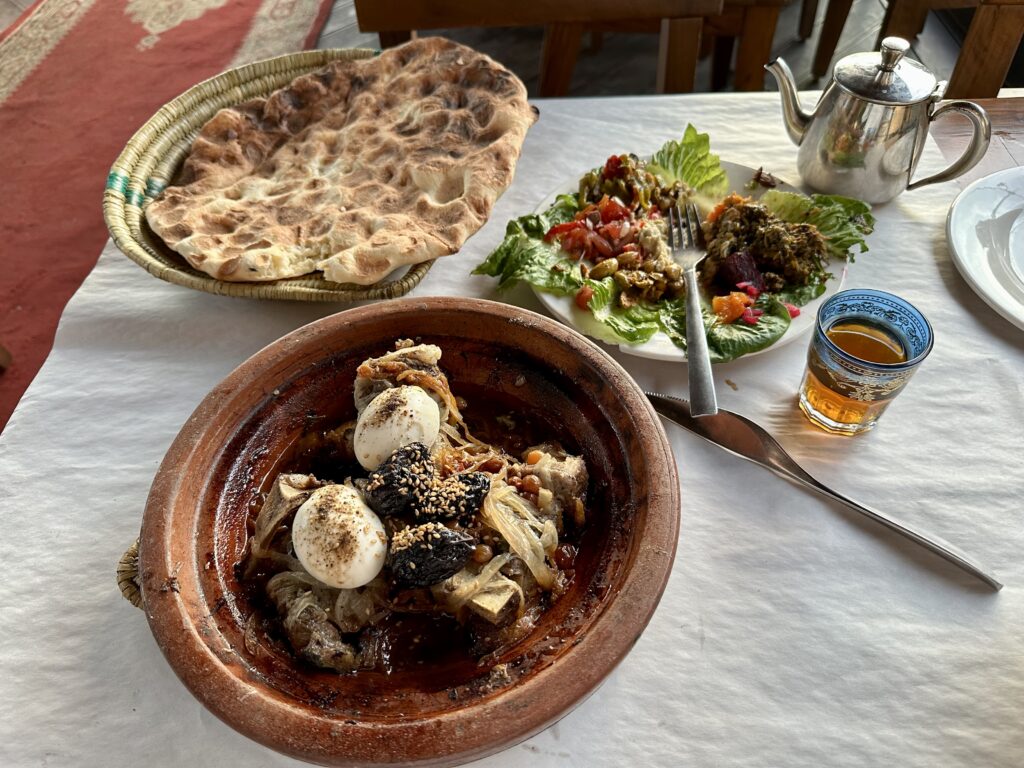
The picture above features one of the best tagines I’ve ever eaten – a goat tagine, served with a mix of Moroccan salads, Moroccan tea, and traditional Moroccan bread, at Restaurant Dar Tajine (meaning ‘The House of Tajine’) in Agadir.
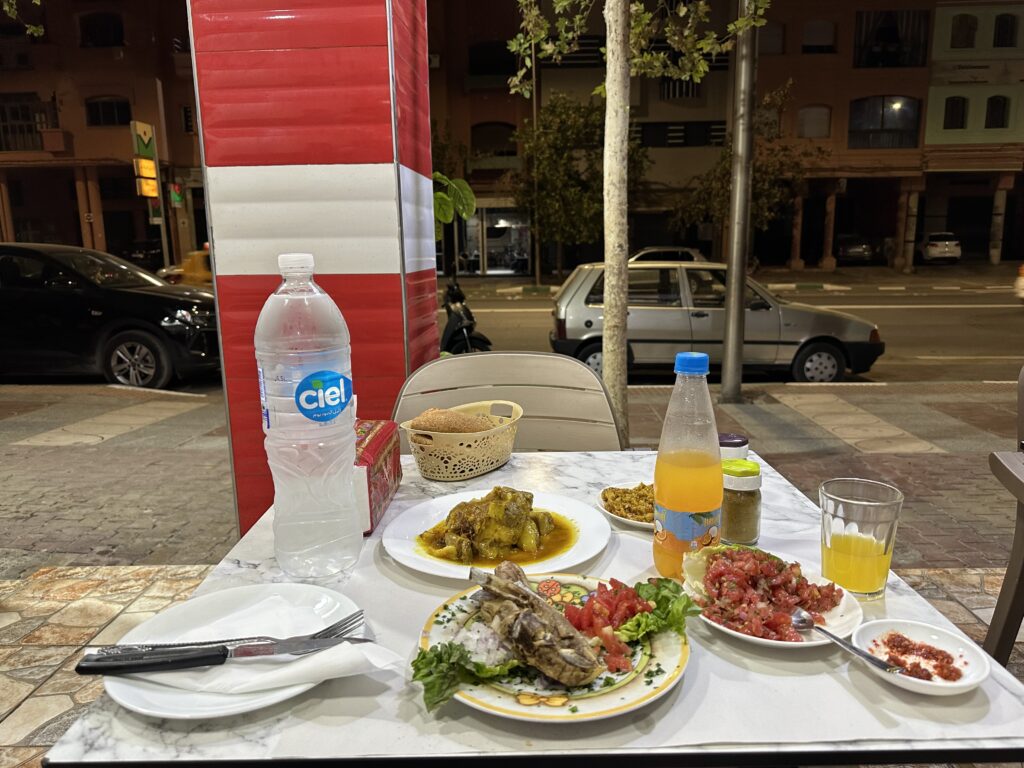
An example of a simple meat restaurant in Beni Mellal. It’s a fresh butcher-grill bar, offering very fresh meat. The quality and freshness of the meat in such places is typically very good. Definitely worth trying, and it’s low-cost.
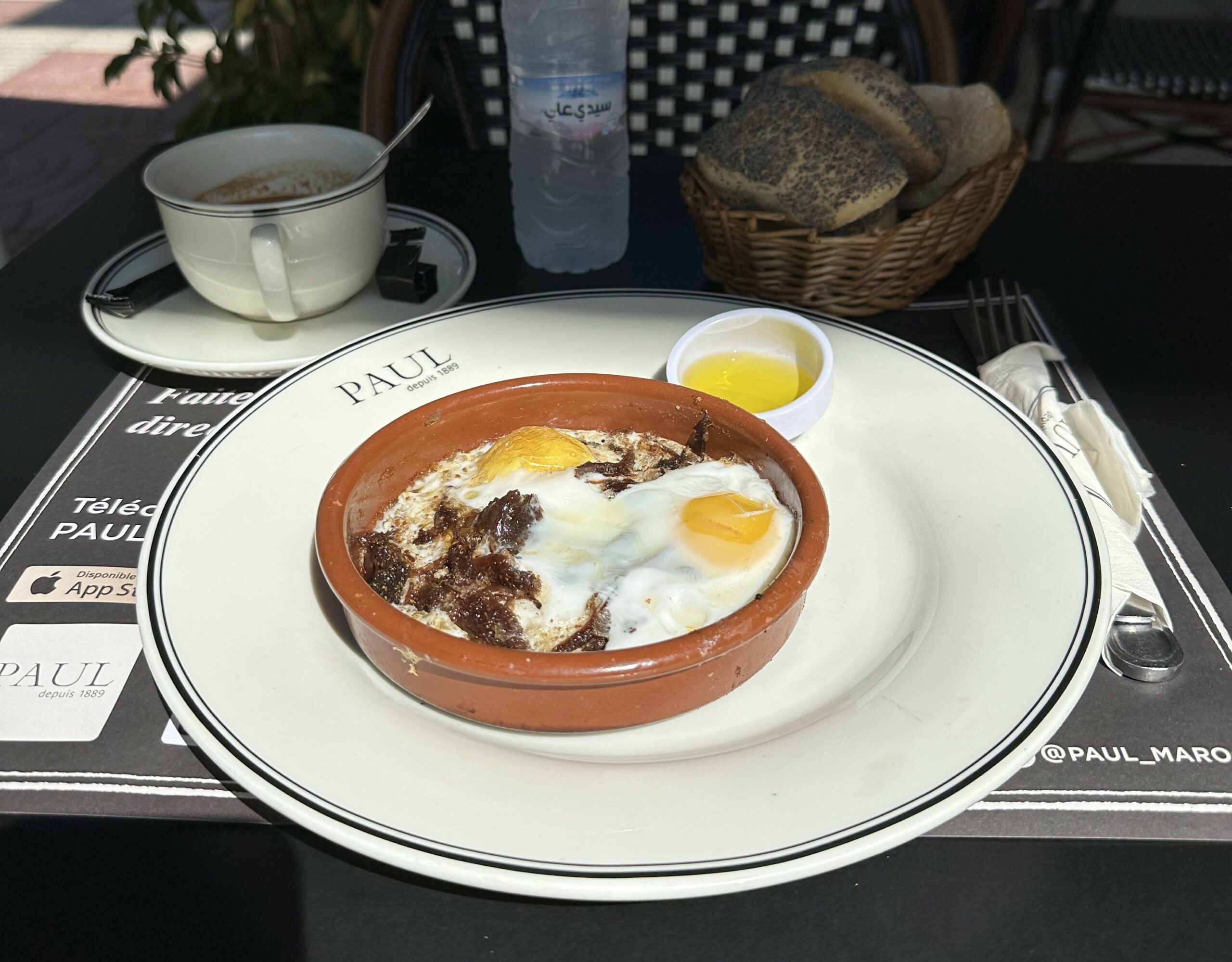
On the picture Moroccan khlea – dried beef served with scrambled eggs. It is one of the most famous traditional Moroccan breakfasts. It originates from the region Fes-Meknes. The taste of the beef in khlee is very deep and a bit salty, very tasty breakfast.
Discover more about Morocco and its diverse tourist offerings:
Discover Morocco: Culture, Travel & Economy
Explore Morocco’s vibrant culture, travel tips & economic insights. Get the latest news and immerse in the beauty of this enchanting nation.
The Most Popular on BitGlint

30 Divergent Thinking Examples & Definition
Divergent thinking is a powerful mental process that allows us to generate multiple solutions to a single problem....

30 Different Vibes & What They Mean
We all talk about "vibes," but what does that really mean? A vibe is the feeling or atmosphere you sense in a place,...
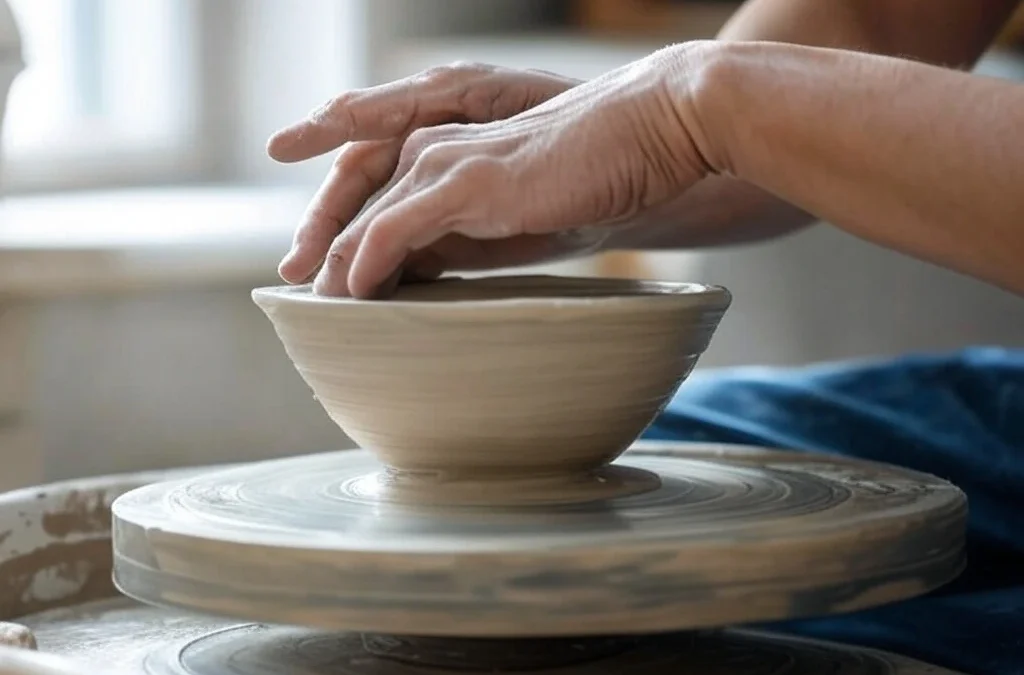
30 Diligence Examples and Definition
Diligence is often the silent force behind extraordinary achievements. While talent and luck certainly play their...

30 Cynicism Examples in Everyday Life & Definition
Cynicism is something most people have seen, heard, or even felt - but few stop to really think about what it means....

30 Examples of Rebirth: Definition & Meaning
Rebirth represents one of the most powerful concepts in human experience - the process of starting anew after an...

Top 100 Optimism Examples & Definition
Optimism is more than just looking on the bright side. It’s a mindset that shapes how people face challenges, make...

50 Intellectual Challenge Examples
Intellectual challenges serve as excellent tools for mental stimulation, cognitive development, and continuous...
Get Inspired with BitGlint
The Latest
20 Chronology Examples & Meaning
Chronology is something we use more than we realize. It shows up in conversations, in how we remember the past, and in how we explain things. From simple routines to major historical events, we often rely on chronological order to keep things clear. But what exactly...

30 Mediocrity Examples & What It Really Means
Mediocrity often carries a negative connotation in our achievement-oriented society. Yet, this concept plays an important role in our understanding of human performance, artistic creation, and everyday life. Most of us operate in the realm of mediocrity much of the...
30 Oversimplification Examples & What it Means
Oversimplification is everywhere. You've probably encountered it many times - on social media, in casual conversations, and even in the news. But what exactly is oversimplification, and why should you care? Simply put, oversimplification happens when complex issues...
20 Examples of Secondary Consumers in the Food Chain
Secondary consumers are animals that eat other animals—usually herbivores that feed on plants. They’re an important part of how food chains work. You won’t find them eating grass or leaves. Instead, they hunt or scavenge animals that already got their energy from...

